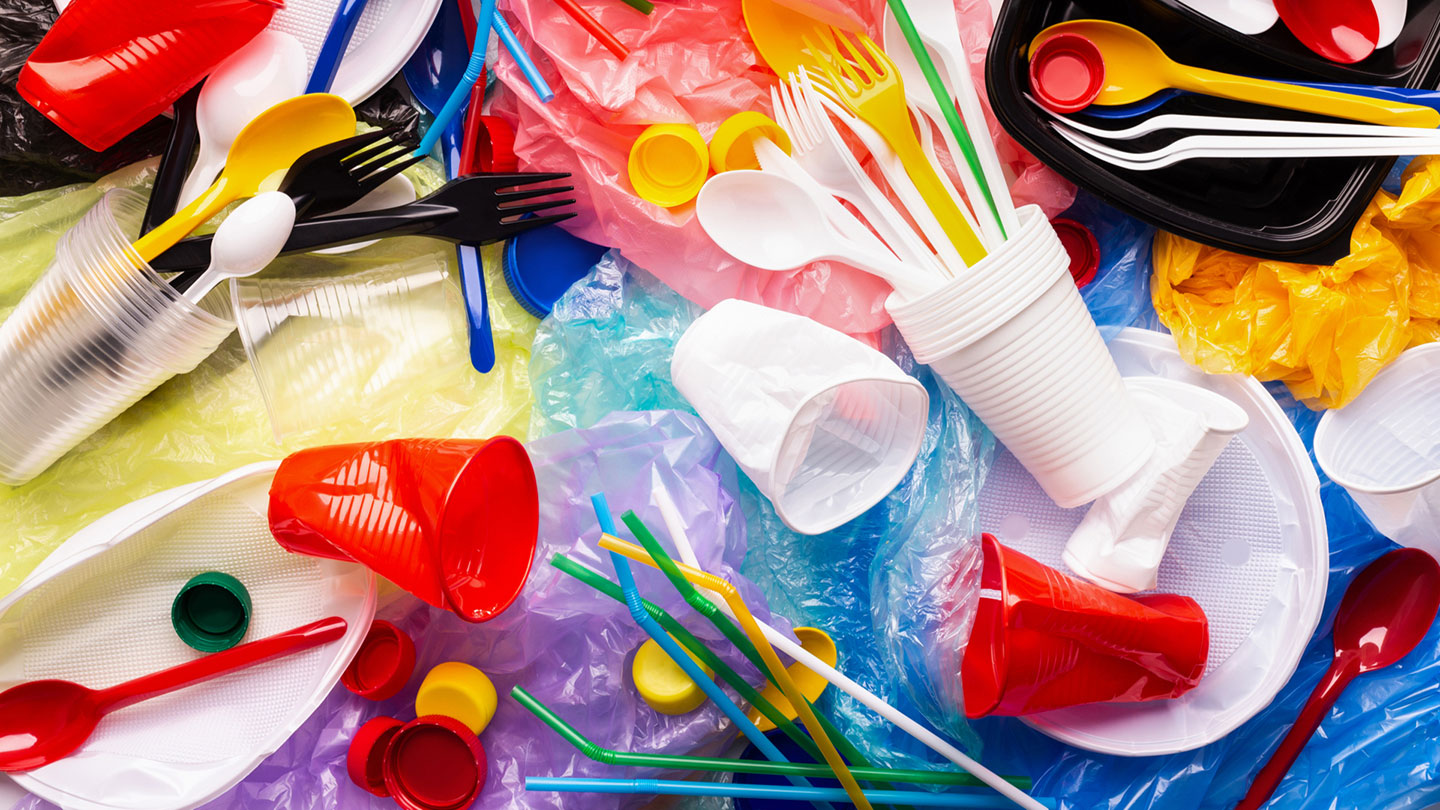Medical
Endocrine Disruptors: Toxic chemicals hiding in common household items
Toxic chemicals can disrupt hormonal balance. These trick our body, barge into our endocrine system to contribute to obesity, diabetes, certain cancers and fertility disorders. Read on to find out more about these chemicals, and what you can do about them

Chemicals aren’t inherently bad! But, they aren’t completely safe either. Certain chemicals, especially characterized as endocrine disrupting chemicals (EDC) can dangerously play with our health–resulting in a range of development, metabolism and reproductive issues. “EDCs interfere with the working of hormonal systems. It can cause cancerous tumours, birth defects, developmental disorders, reproductive problems, immunity and brain-related problems,” says Dr S K Wangnoo, Endocrinologist, Apollo Hospitals, New Delhi. The journal Lancet points out that there are particularly strong influences of EDC on obesity, thyroid, glucose tolerance functions, gestational diabetes, birth weight, semen quality, polycystic ovarian syndrome, endometriosis, and breast cancer.
Endocrine disruptors are found in everyday products we use. “They can be found in plastic bottles and containers, metal food cans, e-cigarettes, detergents, plastic toys, flame retardants, cosmetics, pesticides,” explains the doctor.
Impact of Endocrine Disruptors on Human Health
- Hypothyroidism and other effects on the thyroid gland: Overexposure to EDC interferes with the functioning of thyroid gland cites International Journal of Molecular Sciences. EDC causes changes in hormone levels and can decrease the free hormone levels of the body. “It can lead to hypothyroidism,” says Dr Wangnoo.
- Growth and development issues: Exposure to EDC can result in low birth weight or preterm birth says a scientific paper titled Exposure to Environmental Endocrine Disruptors and Development. It further says that considering the impact the thyroid has in the physical development, neuronal and cognitive functioning, a negative impact on thyroid function by EDC might have important repercussions on neuronal and physical health and development. “High exposure to EDC also disturbs the function of sex hormones and weakens the immune system,” adds the doctor.
- Neurological issues: Certain EDCs can alter neural transmission and formation of neural networks, says a report by Pharmacology. EDCs disrupt normal brain functions with an increase in neuropsychiatric disorders, including autism, attention deficit, hyperactivity, and learning issues. “Over time, EDC can also reduce the ability to handle stress,” says Dr Wangnoo.
- Weight gain and type 2 diabetes: Endocrine disruptors can induce obesity. “EDCs can modify the basal metabolic rate, alter the gut microbiota, promote food storage and alter the hormonal control of appetite and satiety—all these can contribute to obesity,” says a study by Environmental Research and Public Health. “EDCs can interfere with basic cellular morphological and biochemical processes thereby potentially also inducing other broad spectrum of pathologies linked to obesity such as insulin resistance, diabetes mellitus, metabolic syndrome, cardiovascular diseases, carcinogenesis and infertility,” says the doctor.
- Cancer: Exposure to EDC is linked to uterine, ovarian and breast cancer in women, mentions a study material in Endocrine Society. EDC acts on mammary glands to increase the risk of breast cancer, reports the publication Oncology Letters. In men, exposure to EDC is associated with testicular and prostate cancer.
How to Avoid Endocrine Disruptors
- Wear masks when handling or working with pesticides/herbicides or fertilizers.
- Take care that children don’t put plastic containers and electronic equipment in their mouth as it might not be BPA free. Use BPA free plastic where possible.
- Always drink filtered water with at least sediment and UF filters which are proven to remove heavy metals and microplastics which can cause endocrine problems.
- As seafood can be exposed to high levels of microplastics, always remove the outer skin and cook seafood before consumption.
- Avoid raw meat dishes, like sashimi, which are made from unverified meat sources.
- Quit smoking and stay away from secondary smoke.
- Use glass, porcelain or stainless-steel containers for hot beverages as plastics can melt and percolate into the hot beverages.
- Do not discard construction waste and household electrical equipment in municipal waste. These wastes contain high amounts of enamel which can seep and pollute underground aquifers.
- Invest in unlacquered wooden toys or hardened clay toys for kids to keep them away from plastic.
- Spread more awareness on endocrine disruptors and educate everyone to stay healthy.
9 Most Common Endocrine Disruptors and Where We Find Them
- Bisphenol A: This chemical can be found in hard plastics, baby bottles, pitchers, epoxy resins, bottle tops, water supply pipes, CDs, computers, DVDs, tableware, and food containers.
- Dioxins: World Health Organization says that dioxins can be found throughout the world in the environment, and they accumulate in the food chain, mainly in the fatty tissue of animals. More than 90% of human exposure is through food, mainly meat and dairy products, fish and shellfish. “Also, dioxins are also produced as a by-product during herbicide production. It is found in paper bleaching industries too,” adds Dr Wangnoo.
- Perchlorate: It is a chemical produced as a by-product of aerospace, fireworks, weapon, and pharmaceutical industries. It can also be found in drinking water.
- PFAS (Perfluoroalkyl and Polyfluoroalkyl Substances): These chemicals are used widely in industrial applications, such as firefighting foams and non-stick pan, paper, and textile coatings.
- Phthalates: A chemical that adds flexibility to plastics, it is found in food packaging, cosmetics, medical devices, and kids’ toys.
- Triclosan (TCS): This chemical is present in several personal care products such as liquid body wash, deodorants, toothpaste, hand wash and mouth rinses. A paper Triclosan Exposure, Transformation, and Human Health Effects says that the traces of TCS can be found in water bodies too.
- Phytoestrogens: Phytoestrogens are naturally occurring plant-based compounds that are available in many day-to-day foods we eat such as carrots, broccoli, oranges, sesame seeds, soya beans and more. Studies find that excessive or long-term intake of phytoestrogens should be checked with a doctor because phytoestrogens mimic the normal estrogen of the body and can disrupt our hormonal balance.
- Polychlorinated biphenyls (PCB): PCBs are used in the manufacturing of electrical equipment like transformers and capacitors. The chemical is also used in preparation of hydraulic fluids and lubricants such as motor oil.
- Polybrominated diphenyl ethers (PBDE): Mostly used as flame retardants, the products containing PBDE are used in a wide array of products, including building materials, electronics, furnishings, motor vehicles, airplanes, plastics, furniture form and carpets.
EXPLORE MORE
A sprain isn’t “just a sprain.” Here’s what your ankles wish you knew.
Your body whispers before it screams. Here are the early heart disease warning signs most people overlook until it’s too late.
Baldness isn’t just about ageing; it’s a complex condition influenced by biology, habits, and health. Understanding it is the first step toward managing it.
Breast cancer before 40 is rare, but not impossible. Know these warning signs so you can spot them well in time.







.jpg)


